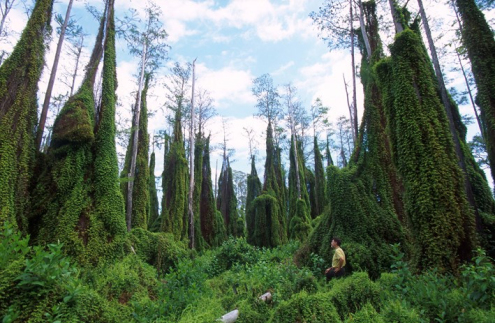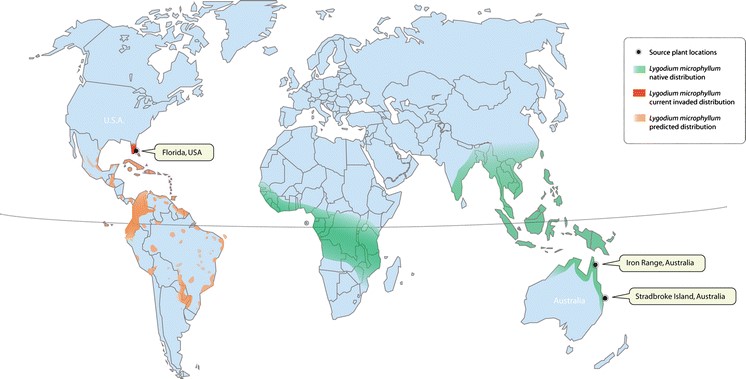| Lygodium microphyllum (Old World Climbing Fern) |

|

Lygodium microphyllum infestation
Pictures below are the two successful biological control agents


Close up of the mite Floracarus perrepae Neomusotima conspurcatalis larvae
Click picture below to view a video of Lygodium microphyllum and the biocontrol agents to control it.
Click the following links for more information:
Looking for Natural Enemies in Asia to Control Invasive Plants
Old world climbing fern (Lygodium microphyllum) is an invasive weed that threatens many wetland communities, including the Everglades. The fern entered Florida as a commercial ornamental plant and was first documented to have become naturalized in 1965, however its explosive growth and rapid spread are relatively recent and causing concern.

Image from Volin, J.C., Kruger, E.L., Volin, V.C. et al. Plant Ecol (2010) 208: 223. https://doi.org/10.1007/s11258-009-9700-6
L. microphyllum is native to wet areas in the Old World tropics and subtropics from west Africa to eastern and southern Africa, and eastern India through south-east Asia to northern Australia and the Pacific to Tahiti.
L. microphyllum is considered to be a good target for biological control for several reasons:
- It belongs to a taxonomically isolated group, not closely related to native or economic plants in Florida.
- It is not known to be a weed in its native range, apart from an unconfirmed report of weedy tendencies in Malaysia.
- Non-biological control methods are environmentally damaging and too expensive to use on the scale required to control it.
The UF/IFAS Center for Aquatic and Invasive Plants has created this excellent short educational video with more information
